HIJMS Mikasa
As the Great White Fleet has just departed from Japan I thought it might be appropriate to outline some information on the Japanese battleship HIJMS Mikasa understood to be the only surviving pre-dreadnought battleship in the world.
This is a picture of Mikasa in Yokosuka, Japan in 2005
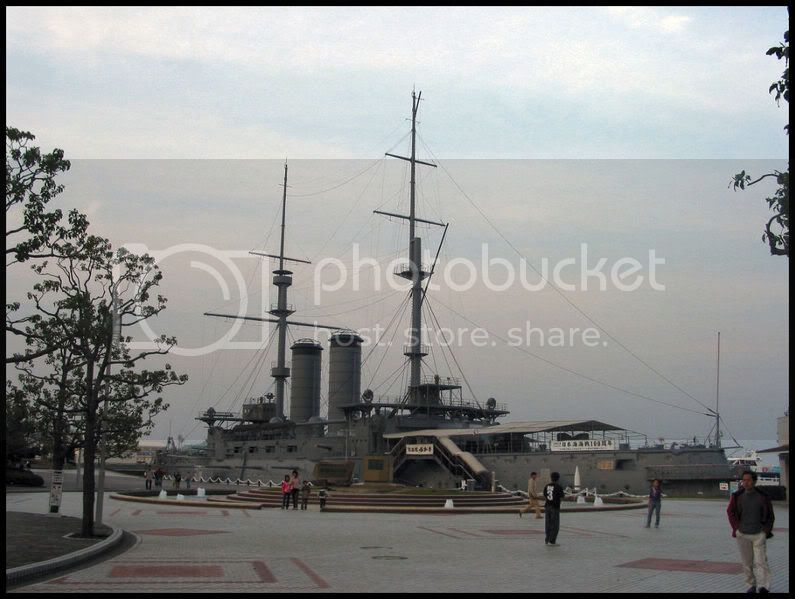
General Statistics
Displacement: 15,140 tons
Length: 132 m
Beam: 23.2 m
Draft: 13.2 m
Speed: 18 knots
Complement: 860 officers and men
Armament: 4 x 12 inch guns
14 x 6 inch guns
20 x 3 inch guns
4 x 400 mm underwater tubes
Some detailed Information from Jane's Fighting Ships 1906-07.
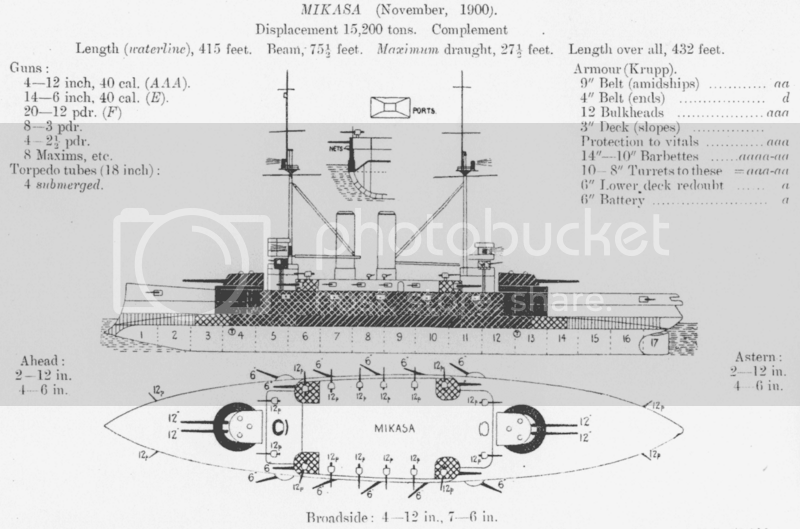
Mikasa is a pre-Dreadnought battleship, formerly of the Imperial Japanese Navy, launched in Britain in 1900. She served as the flagship of Admiral Togo Heihachiro during the Battle of Tsushima in 1905, as well as several other engagements during the Russo-Japanese War. Currently, she is preserved as a museum ship at Yokosuka. Mikasa is the last remaining example of a pre-dreadnought battleship anywhere in the world.
A bow view of the Mikasa
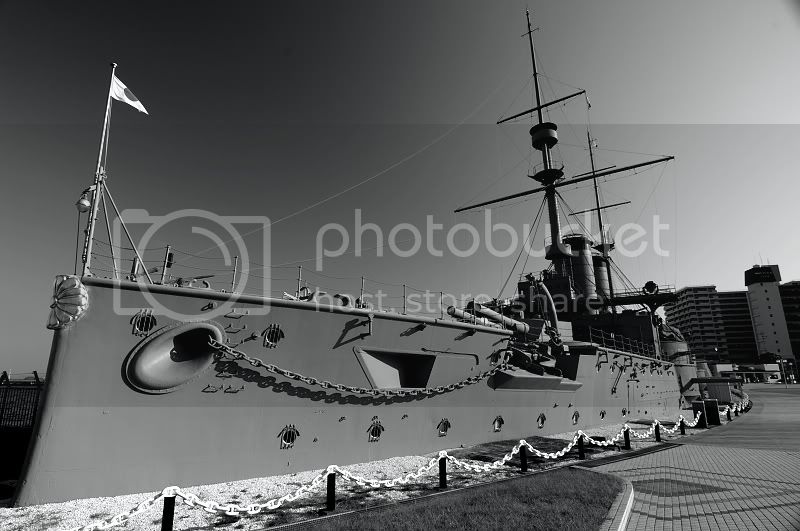
Following the 1894–1895 Sino-Japanese conflict, and the forced return of the Liaotung Peninsula to China under Russian pressure, Japan began to build up its military strength in preparation for further confrontations. In particular, Japan promulgated a ten-year naval build-up program, with the construction of six battleships and six armored cruisers at its core.
One of these battleships, Mikasa, was ordered from the Vickers shipyard in Barrow-in-Furness, United Kingdom at the end of 1898, for delivery to Japan in 1902. She took three years to complete, at the great cost of £880,000 (8.8 million yen).
That same year Japan also secured diplomatic and strategic support, by concluding the 1902 Anglo-Japanese Alliance with the world's first naval power. The United Kingdom shared Japan's wish to contain Russian expansionism in the Far East, especially to protect its Chinese interests.
A picture of the 12" forward guns of the Mikasa.
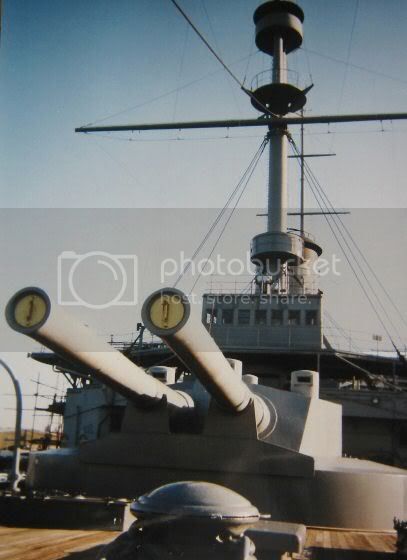
At the time of her delivery, Mikasa was a state-of-the-art pre-dreadnought battleship, achieving an unprecedented combination of firepower and protective strength. She was adapted from the Royal Navy's latest Majestic class design, with increased displacement (15,140 tonnes against 14,900), improved speed (18 knots against 17), slightly stronger armament (two more 6 inch guns), and much stronger armour: she kept the same armour thicknesses but used high performance Krupp armour, around 50% stronger compared to the Harvey armour used by the Majestic class.
A picture of the stern of the battleship Mikasa
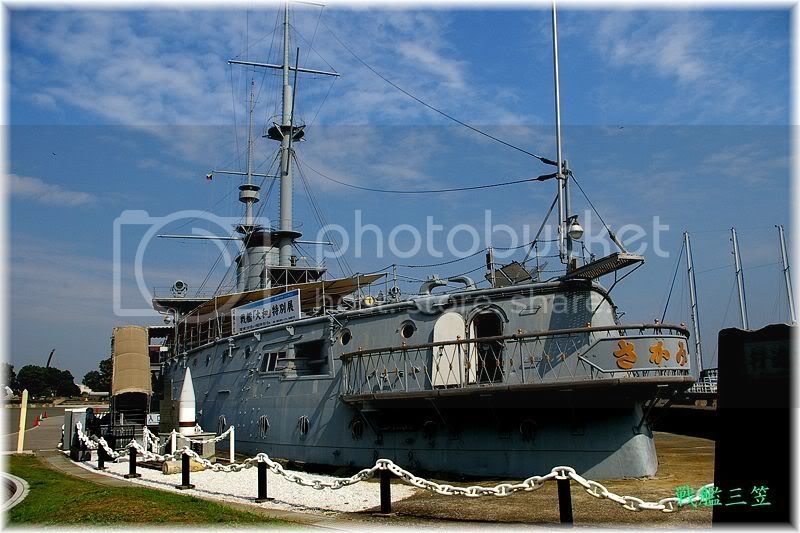
Her main guns, grouped in armoured turrets in a central position, allowed for the rest of the ship to be evenly protected with the heavy Krupp protective steel plates. Thanks to this design, Mikasa was able to withstand a large number of direct hits: she received around 20 hits during the Battle of the Yellow Sea on the 10th of August 1904, and around 30 hits during the Battle of Tsushima, with only limited damage. The firepower and the longer range of the guns of Mikasa were also fully exploited by highly trained and effective Japanese gunners.
At Tsushima, Mikasa led the combined Japanese fleet into what has been called "the most decisive naval battle in history". The Russian fleet was almost completely annihilated: out of 38 Russian ships, 21 were sunk, 7 captured, 6 disarmed, 4,545 Russian servicemen died and 6,106 were taken prisoner. On the other hand, the Japanese only lost 116 men and 3 torpedo boats.
A painting of Admiral Togo on the bridge of the Mikasa, before the Battle of Tsushima in 1905.
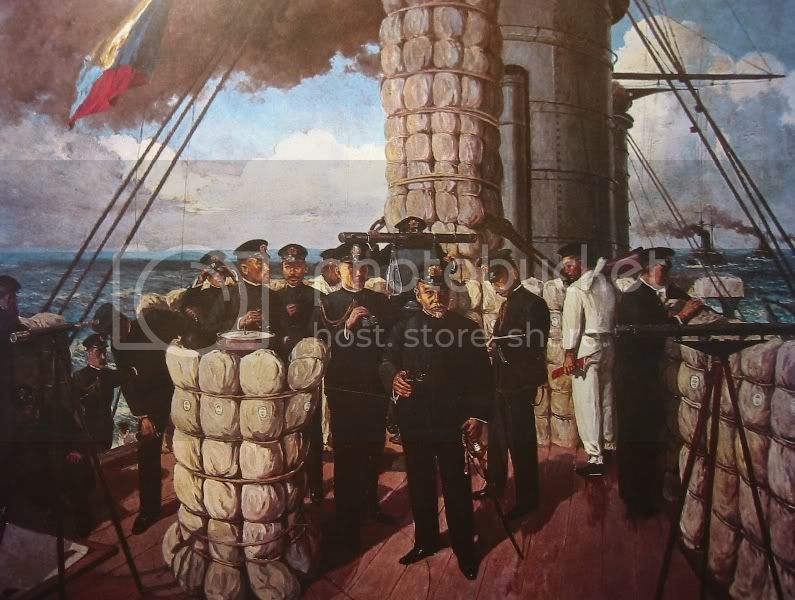
The performance of the Japanese fleet was observed and analyzed by Western powers, and played an important role in the definition of the next generation of battleships (the Dreadnoughts), since the conflict "confirmed the greater efficiency of heavy guns and the importance of long-range gunfire." - "The Battleship Dreadnought" Conway Marine.
Also, the defeat of the Russian fleet and the signature of the Treaty of Portsmouth (signed on September the 5th), intensified unrest in Russia. In 1905 there were naval mutinies at Sevastopol, Vladivostok and Kronstadt, peaking in June, with the mutiny aboard the Battleship Potemkin. The Russian Revolution of 1905 culminated in October, when the Tsar was compelled to renounce his absolutist powers, and sign the October Manifesto.
Finally, the Japanese victory confirmed Japan's emergence as the pre-eminent power in Asia, and a force to be reckoned with on the international scene.
Today Mikasa is the last remaining battleship of the pre-dreadnought era.
Ironically, after the peace treaty with Russia was signed on the 11th of September 1905, Mikasa suffered a fire while in harbour in south Japan, at Sasebo. A magazine exploded and she sank in 11 meters of water. The explosion killed 339 crewmen, which was three times the number killed at Tsushima. Extensive efforts were made to refloat and salvage the ship, and after repeated attempts, she was refloated on the 8th of August 1906.
After two years of repairs, the Mikasa was recommissioned and restored to active service; however she soon became obsolete following the development of newer types of vessels, especially the Dreadnoughts, and was derated to a 2nd class battleship, then to a 3rd class battleship, and on the 1st of September 1921, to that of a 1st class coast defense vessel.
A picture of the naval ensign of the battleship Mikasa
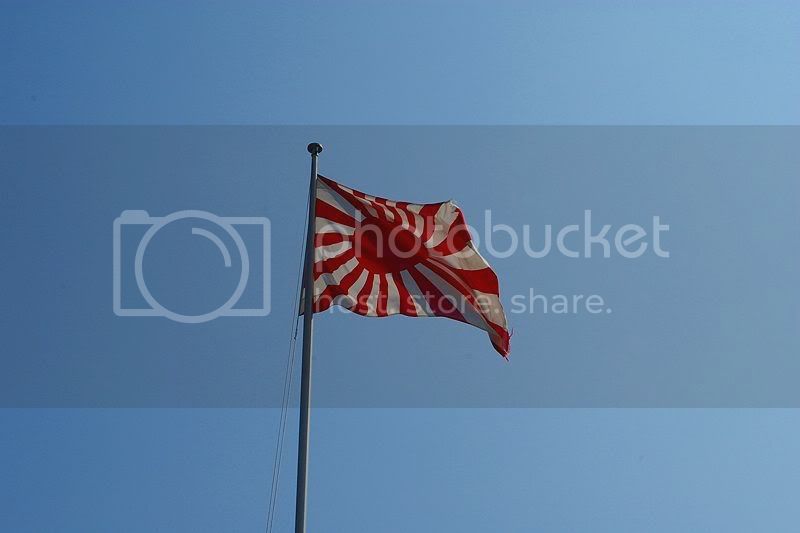
The Mikasa ran aground during the Japanese intervention in Siberia during the Russian Civil War on the16th of September 1921 in the Askold Channel while cruising in dense fog. She was recovered with the assistance of the Fuji, Kasuga, Yodo, and repaired at Vladivostok. After her return to Maizuru, her active deployment was terminated, and she was placed in the mothball fleet.
A picture of the Mikasa in 1905.
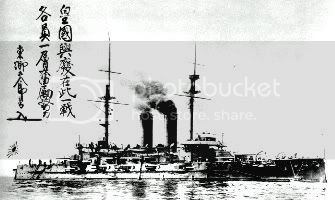
The Mikasa was decommissioned following the Washington Naval Treaty of 1921 and scheduled for destruction. However, at the request of the Japanese government, each of the signatory countries to the treaty agreed that the Mikasa be preserved as a memorial ship. On the 12th of November 1925, the Mikasa was put on display in Yokosuka, Japan.
During World War II she was bombed during the various raids by the USAAF. Following Japan's defeat, the American occupation forces confiscated Mikasa and dismantled her guns, leaving her in very poor state. The government of the Soviet Union made strong demands that the Mikasa be destroyed completely as a symbol of Russia's humiliation by Japan during the Russo-Japanese War The Russian demands were dropped when the Soviet ambassador visited the ship and saw its extremely dilapidated state.
A preservation movement resumed in 1958, with US participation through financial support and the direct involvement of Admiral Chester Nimitz. The restoration was completed on the 27th of May 1961, at a cost of 180 million yen. A substantial amount of the missing parts and fittings were provided from the Chilean Battleship Almirante Latorre, which was being scrapped in Japan at the time.
Whilst I have yet to visit this fine battleship myself I understand from others I understand that this battleship is restored inside and out as well. See below at the authorised website which has several internal photos and it looks to me that this battleship is maintained toa very high standard indeed.
The Mikasa has been designated as one of the "Three Great Historical Warships of the World", together with Victory in Portsmouth, UK, and Constitution in Boston, USA.
Here is a link to the Official Mikasa website – there are some more great pictures of this fine ship on that site:
http://www.city.yokosuka.kanagawa.jp/e/mikasa/
Here are a series of photographs compiled of the Mikasa at Yokosuka, Japan – credit given to Troy at www.midwaysailor.com for these great pictures.
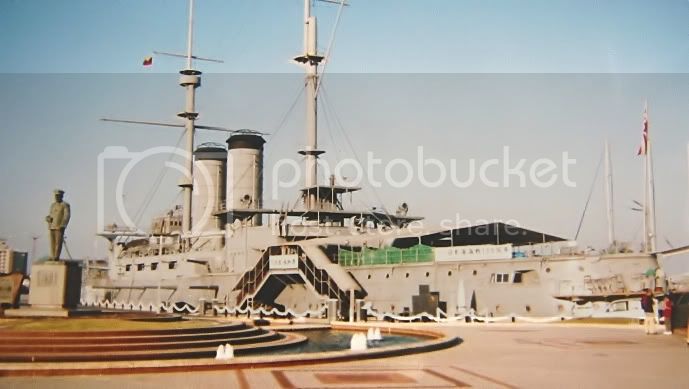
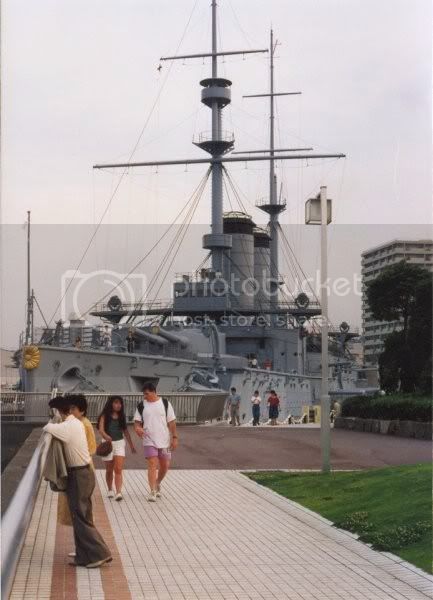
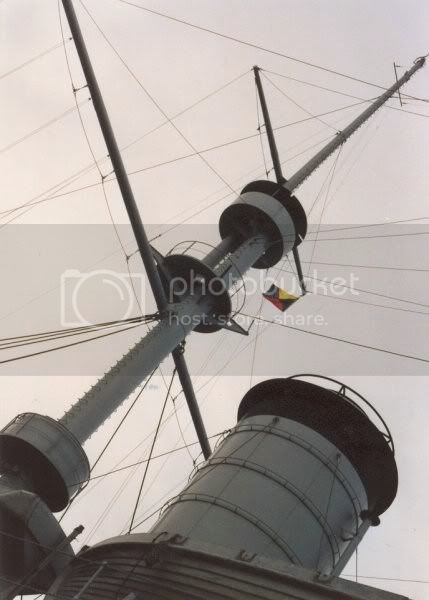
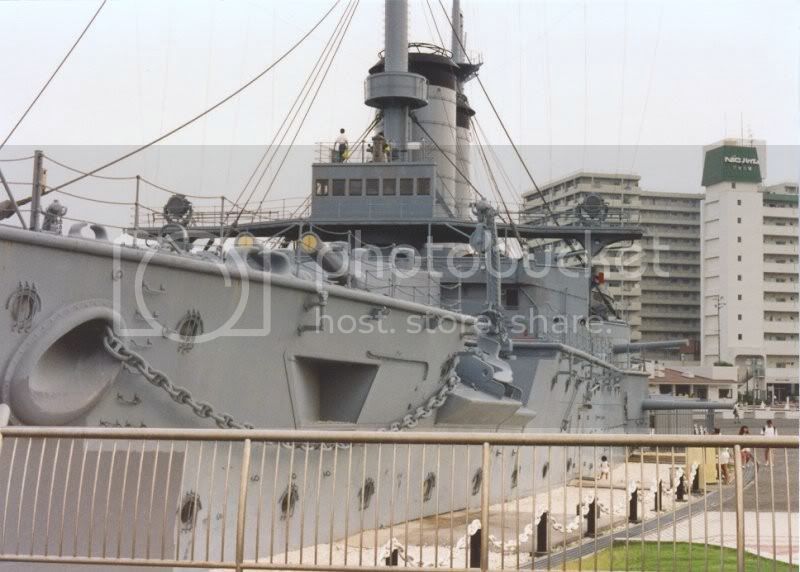
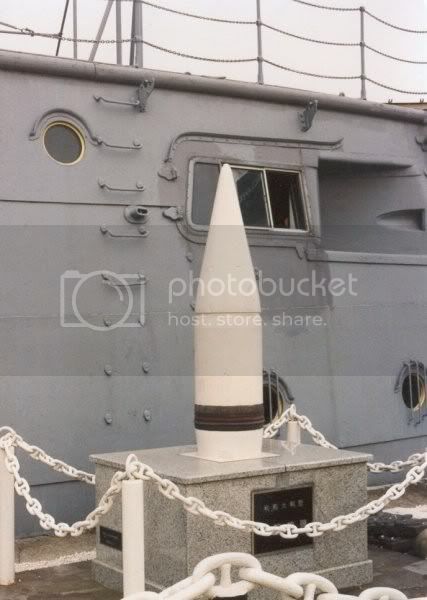
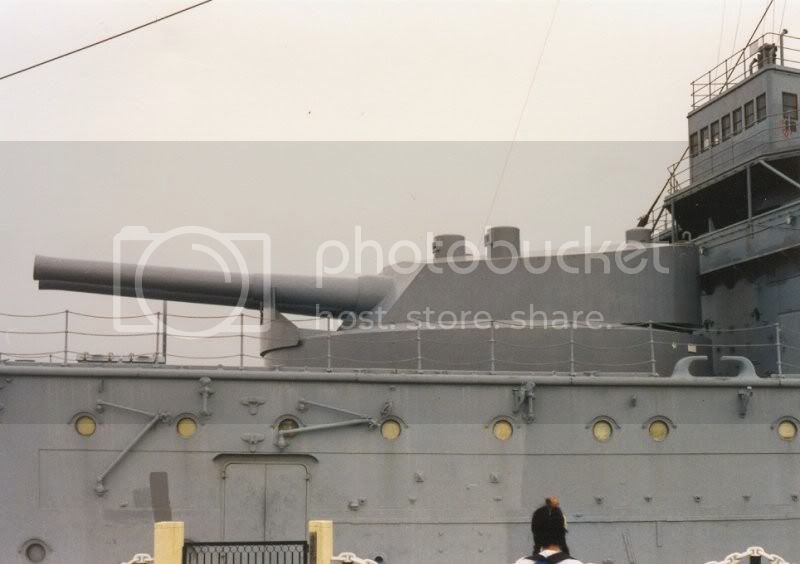
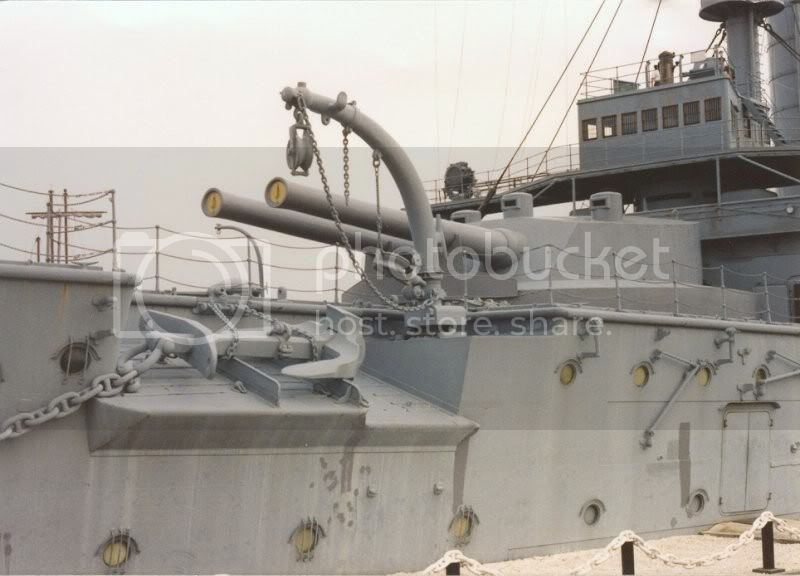
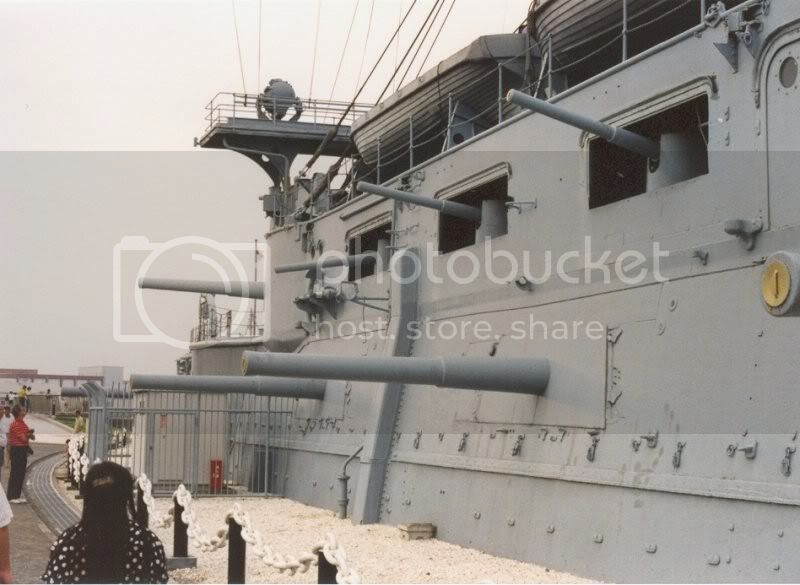
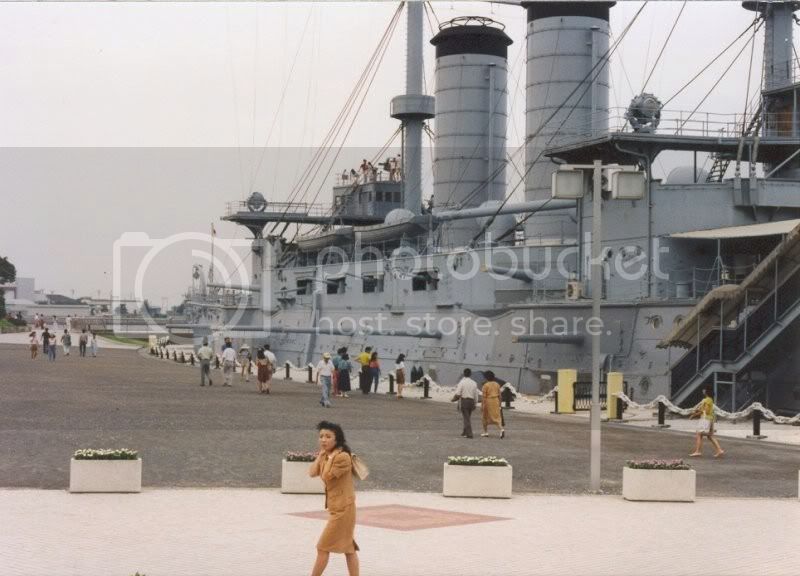
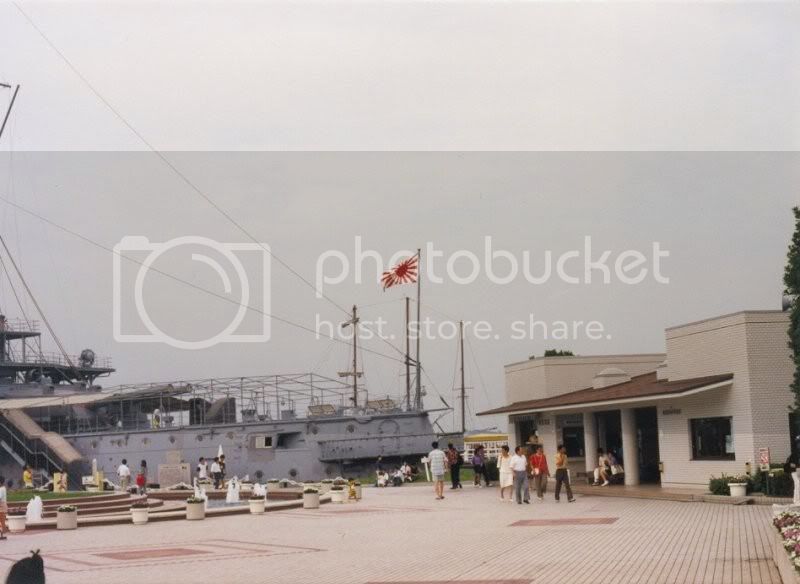
As a personal aside I think it is great to be discussing a pre dreadnought as a current item as opposed to past scrapped relic. Again its only a minor personal opinion but I wish that some of the past world leaders had used some statesman like foresight to have retained a few more pre–dreadnought battleship as a monument/memorial to a fine era of naval history.
Cheers
Sean









